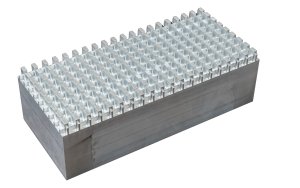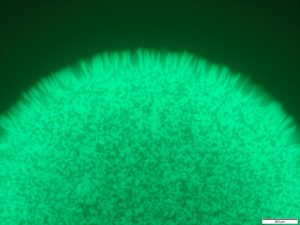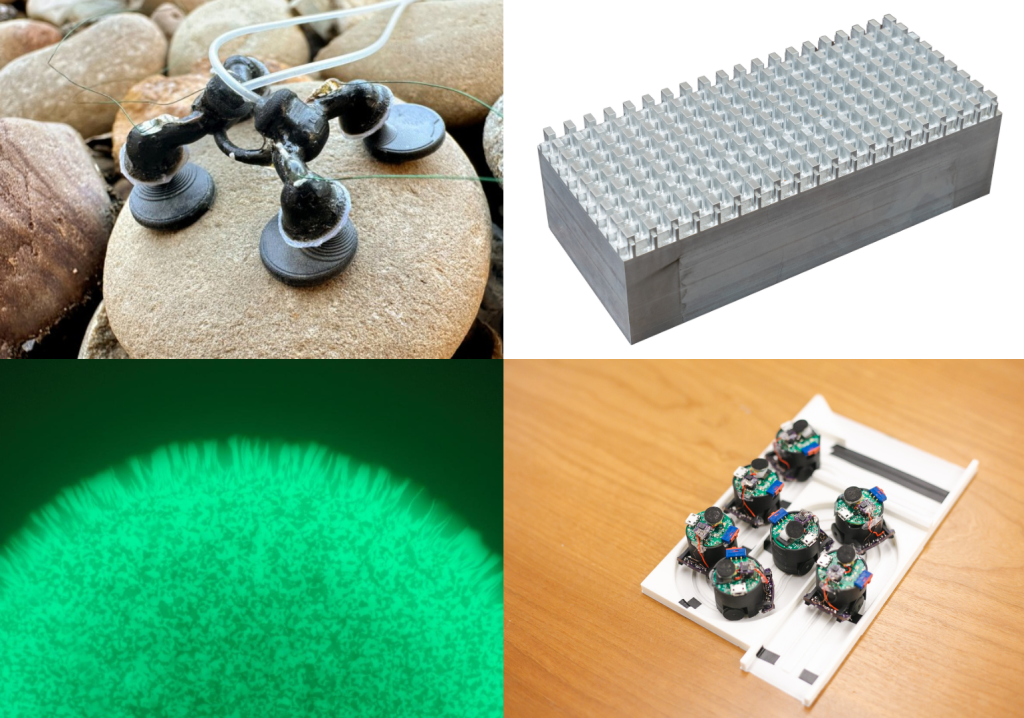Here are four of the latest engineering innovations: four-dimensional material, cancer-detecting bacteria, a combustion-powered robot and smart speakers.
Four-dimensional material
A University of Missouri team has developed a four-dimensional synthetic metamaterial with properties that include the ability to control energy waves on its surface. Representing a fourth dimension in addition to the other three physical ones, these waves shape how vibrations move along solid materials.

“Conventional materials are limited to only three dimensions with an X, Y and Z axis,” said the University of Missouri’s Guoliang Huang. “But now we are building materials in the synthetic dimension, or 4D, which allows us to manipulate the energy wave path to go exactly where we want it to go as it travels from one corner of a material to another.”
The metamaterial makes use of a technique called topological pumping, which allows waves to travel without being disturbed by defects in a material.
The team sees uses for the technology in defence, microelectromechanical systems, and civil engineering, where it could be used to help prevent buildings from collapsing during an earthquake.
Cancer-detecting bacteria
A strain of bacteria has been genetically modified by researchers at the University of Adelaide so that it can signal the presence of colorectal cancer cells. By detecting mutated DNA released from the cells, the engineered Acinetobacter baylyi microbes make use of the bacteria’s natural ability to integrate DNA from its environment.

The team found that the sensor bacteria, named CATCH — or Cellular Assay of Targeted CRISPR-discriminated Horizontal gene transfer — could differentiate models with and without cancer cells with 100 per cent success rates.
“CATCH has the potential to detect bowel cancer early, with the aim of preventing more people from dying of this and other cancers,” said Associate Professor Susan Woods. “This study demonstrates how bacteria can be designed to detect specific DNA sequences to diagnose disease in hard-to-reach places.”
The team hopes CATCH will allow more diseases to be detected and prevented using cells rather than drugs.
Combustion-powered robot
Engineers at the US’s Cornell University have equipped a robot with a high-energy-density chemical fuel and soft microactuators to create an insect-sized device powerful enough to leap 600 mm into the air — 20 times its body length.
This robot is made of a flame-resistant resin and pops into the air when a piece of silicone rubber is inflated by an ignited methane and oxygen mixture.
“We thought using a high-energy-density chemical fuel, just like we would put in an automobile, would be one way that we could increase the onboard power and performance of these robots,” said PhD student Cameron Aubin.
“We’re not necessarily advocating for the return of fossil fuels on a large scale, obviously. But in this case, with these tiny, tiny robots, where a millilitre of fuel could lead to an hour of operation, instead of a battery that is too heavy for the robot to even lift, that’s kind of a no-brainer.”
Smart speakers
A University of Washington team has developed a fleet of smart speakers that can divide rooms into different zones and track individual speakers.
The resulting system can isolate sound from different parts of a space — a conference room, for instance — and allow users to mute some areas while focusing their attention on others.
The technology uses a fleet of microphones carried on seven small robots that charge at a central spot before distributing themselves across a surface, such as a table.
“If I close my eyes and there are 10 people talking in a room, I have no idea who’s saying what and where they are in the room exactly,” said doctoral student Malek Itani. “That’s extremely hard for the human brain to process. Until now, it’s also been difficult for technology.”
“For the first time, using what we’re calling a robotic ‘acoustic swarm’, we’re able to track the positions of multiple people talking in a room and separate their speech.”
